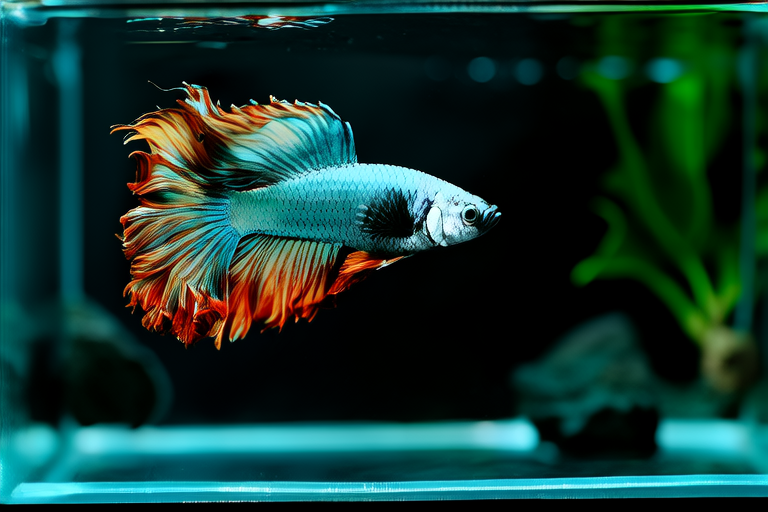
Betta Behavior Decoded: Understanding Your Finny Friend’s Moods
Welcome to the fascinating world of Betta fish! These vibrant, graceful creatures have captivated aquarium enthusiasts for generations. Known for their striking colors and flowing fins, Bettas are among the most popular fish kept as pets. Their resilience and relatively low maintenance requirements make them ideal for both novice and experienced aquarists. This article will guide you through understanding your Betta’s behavior, helping you become a more attentive and caring owner.
The Unique Characteristics of Betta Fish
Betta fish, scientifically known as Betta splendens, originate from Southeast Asia, particularly Thailand and Cambodia. In their natural habitat, they live in rice paddies, canals, and slow-moving streams. Bettas have adapted to survive in environments with low oxygen levels, developing labyrinth organs that allow them to breathe air at the water’s surface. This adaptation explains why it’s essential to provide your Betta with a tank that includes a small amount of surface area for air exchange.
One of the most striking features of Betta fish is their elaborate fins. Male Bettas, especially, boast long, flowing fins that they use during courtship displays. Females, while equally beautiful, tend to have shorter, more compact fins. The diversity in Betta colors is another reason for their popularity. From vibrant blues and reds to pastel pinks and greens, there’s a Betta to suit every taste.
Common Behaviors and What They Mean
Flaring Gills
One of the most dramatic behaviors you might observe in your Betta is gill flaring. When a Betta flares its gills, it spreads its operculum (the bony flap covering the gills) wide open, creating a fan-like appearance. This behavior often occurs when the Betta feels threatened or territorial. In the wild, Bettas may flare their gills to ward off rivals or defend their territory. In captivity, this could be triggered by the presence of another fish, even if it’s just a reflection, or by a perceived threat near the tank. It’s a natural response, but excessive flaring can indicate stress.
Fin Movement
Watching your Betta’s fin movements can reveal a lot about its mood. A Betta with relaxed, flowing fins is generally content and comfortable in its environment. However, rapid fin flicking or tail whipping might signal agitation or discomfort. If your Betta is flicking its fins frequently, consider checking the water parameters to ensure they’re within the optimal range for Betta health. High ammonia or nitrite levels can cause stress and lead to unusual fin movements.
Color Changes
Bettas can change their color intensity based on their mood and environment. A stressed Betta might appear paler than usual, while a happy, healthy Betta tends to show brighter, more vivid colors. Color changes can also occur during feeding times, as Bettas may darken slightly due to increased blood flow to the digestive system. Understanding these color shifts helps you gauge your Betta’s overall well-being.
Creating a Stimulating Environment
To encourage positive behavior in your Betta, providing a stimulating and enriching environment is crucial. Here are some tips:
- Proper Tank Size: While Bettas can thrive in smaller tanks, a larger tank offers more space for swimming and reduces stress. A minimum of 5 gallons is recommended for a single Betta.
- Decorations: Include plants, caves, and other structures to mimic a natural habitat. These decorations provide hiding spots and areas for exploration, which can keep your Betta active and engaged.
- Water Quality: Regularly test and maintain proper water parameters, including temperature, pH, and ammonia/nitrite levels. Clean the tank regularly to prevent the buildup of harmful substances.
- Filtration: Use a gentle filter to maintain water circulation without causing strong currents that might stress your Betta.
- Feeding: Provide a balanced diet rich in protein. Offer variety in their food, including pellets, flakes, and occasional treats like frozen or live foods.
Recognizing Signs of Stress or Illness
Despite your best efforts, your Betta might still experience stress or fall ill. Recognizing the signs early can help you address any issues promptly.
Signs of Stress
Common signs of stress in Bettas include:
- Decreased activity or lethargy
- Loss of appetite
- Pale or dull colors
- Erratic swimming patterns
- Increased fin flicking or tail whipping
If you notice these signs, review the tank conditions and make necessary adjustments. Ensure the water quality is optimal and the environment is free from potential stressors.
Signs of Illness
Illnesses in Bettas can manifest in various ways. Some common symptoms include:
- Clamped fins (fins held close to the body)
- Visible spots or patches on the body
- Cloudy eyes
- Floating upside down or difficulty swimming
- Excessive scratching against tank decorations
Any of these symptoms warrant immediate attention. Isolate the affected Betta in a hospital tank to prevent the spread of disease. Consult a veterinarian specializing in fish for diagnosis and treatment options.
Conclusion
Understanding your Betta’s behavior is key to ensuring its happiness and health. By observing their unique actions and responding appropriately, you can create a nurturing environment that promotes positive behavior. Remember to pay attention to changes in color, fin movements, and gill flaring, as these can indicate your Betta’s mood or health status. With proper care and attention, your Betta will thrive, bringing joy and beauty to your home.
Whether you’re a first-time Betta owner or an experienced aquarist, this guide provides valuable insights into decoding your finny friend’s moods. Enjoy the rewarding experience of owning a Betta and watching it flourish in its aquatic home.






